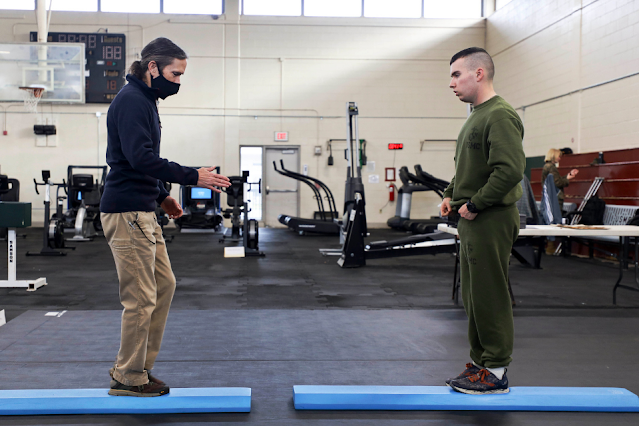By: Carolyn Dartt, MEd, ATC*
Athletic Trainers (ATs) who work with the U.S. military are employed in many
ways. Two of the most common settings for military ATs are at training sites,
such as boot camp, and with special operations units. ATs are also being
increasingly embedded at the unit level in the conventional forces, with many
set to be hired to work in Total Force Fitness models, like the U.S. Army’s
Holistic Health and Fitness (H2F) program and the U.S. Air Force’s Operational
Support Teams (OST). ATs use their expertise in injury prevention and wellness
promotion to keep Military Service Members healthy and performing at optimal
levels. In addition to injury care
and rehabilitation, ATs are also trained in injury prevention and
performance optimization. They work closely with other military medical
providers and performance specialists such as strength and conditioning coaches
to care for injured Military Service Members and help them transition back to
duty and improve their physical performance. ATs are a valuable asset to the
military because they can fill an expansive role and improve access to health
care, while also optimizing and extending Military Service Members’ careers.
Many people watching college or professional sports no doubt
have seen Certified Athletic Trainers (ATs) working on the sidelines or rushing
out to attend to an injured player. However, ATs also work in a variety of
other settings, including performing arts, secondary schools, and physician
practices, as well as public safety settings such as police and fire
departments, and the U.S. military. ATs have been working in military settings
for decades. In the late 1990s, the U.S. Navy began investigating the use of
ATs to provide medical care in a model inspired by the collegiate athletics
setting. Now, more than 20 years later, ATs work in every branch of the U.S.
military. ATs are allied healthcare professionals whose expertise includes
prevention, examination, diagnosis, treatment, and rehabilitation of injuries
and medical conditions. While this might seem like a broad definition, ATs use
their skills and education to provide health care and wellness services to a
wide variety of athletes, patients, industrial employees, and Military Service Members.
As March is National Athletic Training Month, let’s discuss the ATs who work
with our U.S. military and with the Consortium for Health and Military
Performance (CHAMP).
Athletic trainers bring a variety of experiences and education to many practice settings, including the military. ATs are also a valuable resource for Military Service Members for injury diagnosis and treatment, injury prevention, and performance optimization.
For more information about athletic training, visit the National Athletic Trainers’ Association page.
About the Author
Carolyn Dartt, of the Henry M. Jackson Foundation, is a Research Coordinator for the Consortium for Health and Military Performance (CHAMP) at the Uniformed Services University of the Health Sciences.
Carolyn Dartt, of the Henry M. Jackson Foundation, is a Research Coordinator for the Consortium for Health and Military Performance (CHAMP) at the Uniformed Services University of the Health Sciences.
* The opinions and assertions expressed herein are those of the author and do not necessarily reflect the official policy or position of USU or DoD. The contents of this publication are the sole responsibility of the author and do not necessarily reflect the views, opinions, or policies of The Henry M. Jackson Foundation for the Advancement of Military Medicine, Inc. Mention of trade names, commercial products, or organizations does not imply endorsement by the U.S. Government. The author has no financial interests or relationships to disclose.










